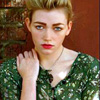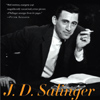The Glass Family Series

Franny and Zooey
"Nobody's perfect, Buddy".

Franny and Zooey was published by Little, Brown and Company on September 14 1961. The book couples two stories that Salinger had previously published in The New Yorker : the story “Franny,” and the novella, “Zooey.” Its publication established Salinger as the leading author of his day but it generated an onslaught of critical scorn perhaps unprecedented in literary history. Reviewers like John Updike and Mary McCarthy derided the book for the smugness of its religious content and bemoaned Salinger for displaying an unbalanced love for his characters. Readers, however, disagreed. Franny and Zooey was an instant sensation and quickly rose to the number one spot on the New York Times bestseller list, a distinction never achieved by even The Catcher in the Rye . Today, Franny and Zooey is recognized as a literary treasure and regarded by many as Salinger's masterpiece. It has remained in constant printing since 1961.
“Franny”
The book's first portion, the short story “Franny,” is the tale of a young woman who questions the values around her. Believing there must be more to life than ego-filled pretension and competition, she determines to seek a more spiritual path to happiness. Desperate for insight, when Franny encounters a religious book titled the Way of a Pilgrim , she is drawn to it immediately. Readers soon realize that Franny has become engrossed by the book's contents - the story of a wandering Russian peasant who seeks to fullfill the Biblical exortation to "pray without ceasing." In fact, as the story progresses, Franny is slowly transformed into a modern day version of the searching pilgrim. Feuling her transformation, Franny has become addicted to the book's Jesus Prayer, a mantra she repeats until it syncronizes with her heartbeat and becomes self-activating. At the story's end, Franny collapses from exhaustion, her lips still involuntarily mumbling the prayer.
“Franny” is a largely dialogue piece containing only two speaking characters and little change of venue. Yet, Salinger's manipulation of shifting narrative perspective is so well-designed in this story as to make it instantly captivating. When "Franny" begins, readers are eased into its situation through the guidance of a third-person narration, which eagerly reveals the motives and inner thoughts of the characters. Yet once the reader becomes comfortable, the narration begins to coyly pull away, until by the story's end it merely relays events, delivering the full responsibility of interpretation solely to the reader. As a story, "Franny" delivers no conclusion. But it does ask many questions. Perhaps the great question posed by “Franny” is whether or not it is possible to attain spiritual enlightenment in modern American Society.
“Zooey”
“Zooey,” the collection's second and larger portion, picks up where the story of “Franny” left off. Debilitated after her collapse at Sickler's, Franny has returned home to her family's Manhattan apartment to recuperate from her spiritual crisis. She lays inert on the living room couch, licking her wounds and decrying the spiritual insensitivity of those around her.
Readers are first introduced to Franny's older brother Zooey, who is cornered in the bathtub by their mother, Bessie Glass. Bessie persuades Zooey to attempt to lift Franny up from her malaise. But Zooey is also suffering from a subtler but no less damaging spiritual crisis. He is consumed by a personal struggle with his own ego and his growth has been stunted by a religious upbringing so advanced that it has bigoted him against others.
Despite Zooey's own shortcomings, he attempts to rescue Franny from her dilemma, but he uses a long argument of intellectual rather than spiritual logic that drives Franny deeper into distress.
Relief for Franny – as well as Zooey – comes at the story's end, a gentle spiritual revelation that is felt by readers as powerfully as it is experienced by the story's characters. Containing Seymour Glass' now-famous parable of “The Fat Lady,” the climax of Franny and Zooey rivals the intangible epiphany found at the conclusion of The Catcher in the Rye .
Franny and Zooey Dust Jacket Notes
The author writes: FRANNY came out in The New Yorker in 1955, and was swiftly followed, in 1957, by ZOOEY. Both stories are early, critical entries in a narrative series I'm doing about a family of settlers in twentieth-century New York , the Glasses. It is a long-term project, patently an ambitious one, and there is a real-enough danger, I suppose, that sooner or later I'll bog down, perhaps disappear entirely, in my own methods, locutions, and mannerisms. On the whole though, I'm very hopeful. I love working on these Glass stories, I've been waiting for them most of my life, and I think I have fairly decent, monomaniacal plans to finish them with due care and all-available skill.
FRANNY and ZOOEY have already been published in The New Yorker , and some new material is scheduled to appear there soon or Soon. I have a great deal of thoroughly unscheduled material on paper, too, but I expect to be fussing with it, to use a popular trade term, for some time to come. (“Polishing” is another dandy word that comes to mind.) I work like greased lightening, myself, but my alter-ego and collaborator, Buddy Glass, is insufferably slow.
It is my rather subversive opinion that a writer's feelings of anonymity-obscurity are the second-most valuable property on loan to him during his working years. My wife has asked me to add, however, in a single explosion of candor, that I live in Westport with my dog.
